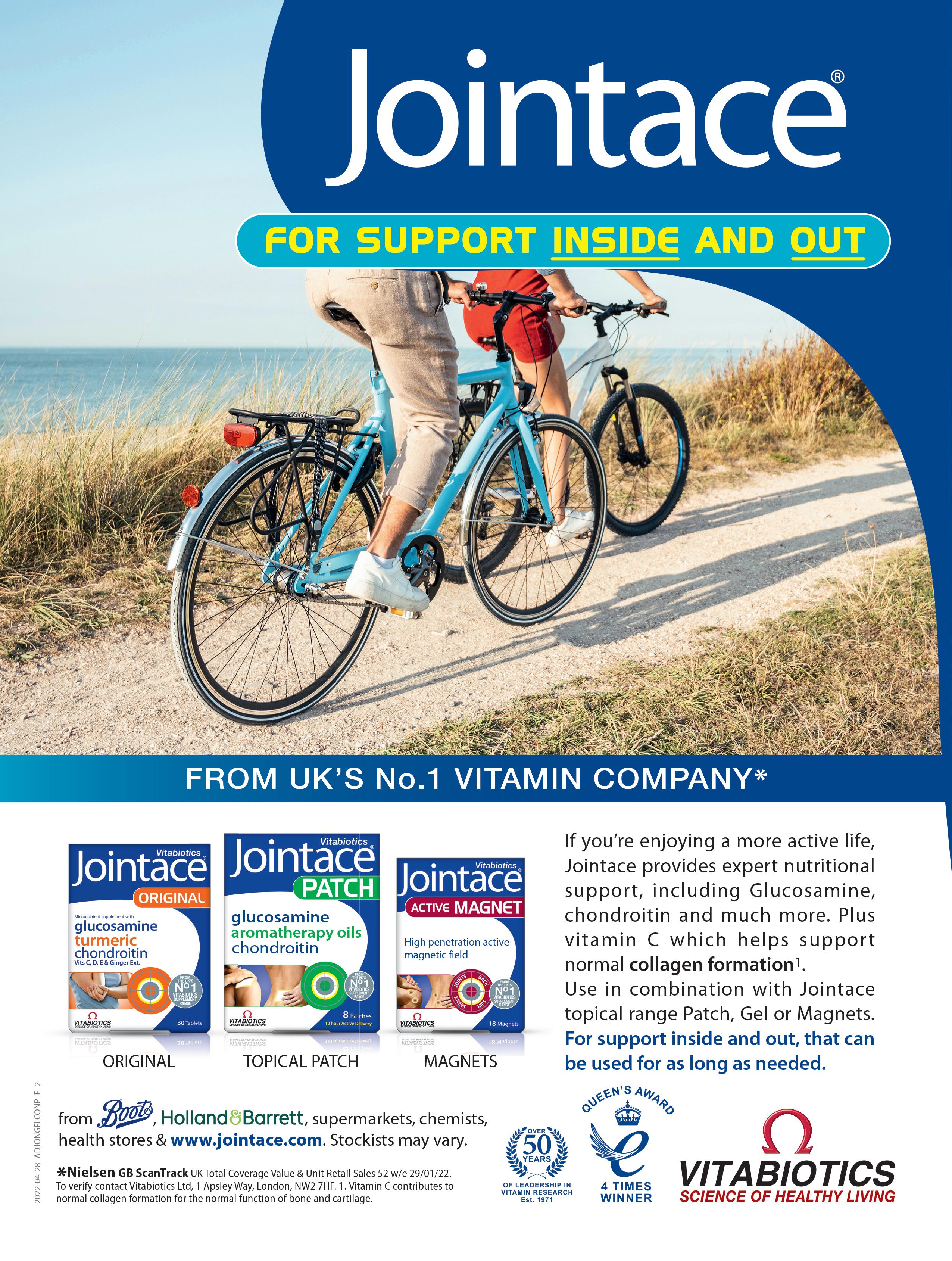
13 minute read
Going Dutch?
Feature
GOING






DUTCH?
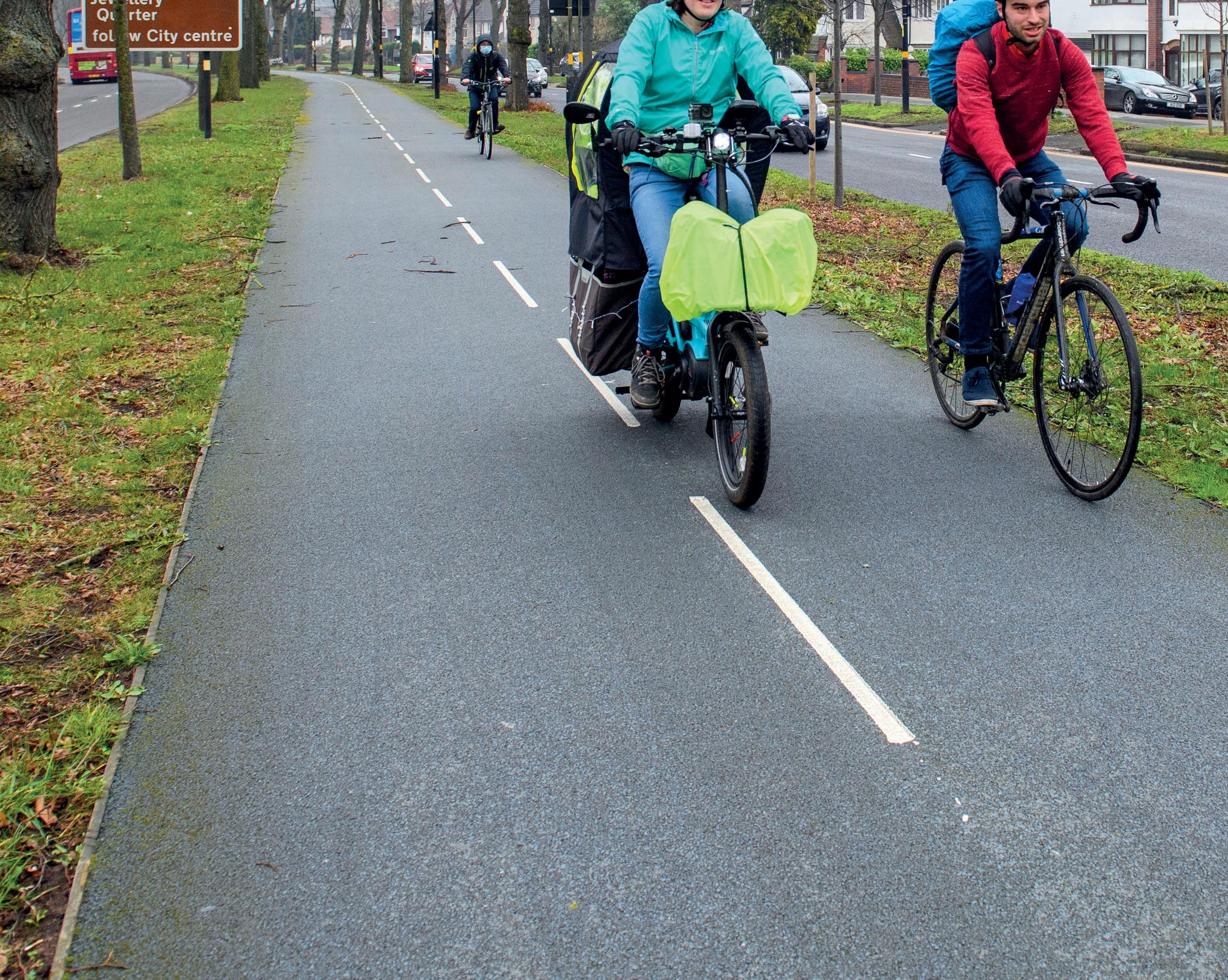

LAURA LAKER
Cycling journalist
Laura writes about cycling and urban transport for The Guardian. She enjoys touring as well as utility cycling
WE’RE DECADES BEHIND THE DUTCH BUT THE UK IS FINALLY WAKING UP TO TRANSPORT CYCLING’S POTENTIAL. LAURA LAKER ASKS IF A NEW GOLDEN AGE FOR CYCLING IS REALISTIC
We all know the arguments for active travel, but with the pandemic bike boom and Highway Code changes if feels like there’s a subtle shift in transport cycling’s prospects – that the arguments, at least, have been won. I spoke to cycling figureheads from the UK’s four nations and asked: can we really transform transport cycling’s fortunes, and if so, how do we get to the point where it’s not just for bold, confident cyclists but accessible to everyone?
DAFYDD TRYSTAN
Chair of Active Travel Board, Wales
How much are things like the Active Travel Act, climate priorities and Wales’s focus on school journeys transforming cycling and walking prospects?
The Active Travel Act means we have nationwide active travel maps, but to do something practical about the aspirations on those maps, you need cash. The Deputy Minister for Transport and Climate Change, Lee Waters, secured a significant increase in Wales’s active travel spend over the last two or three years but we’re only now seeing some of those projects coming through.
Would you say that things are changing in Wales?
As well as new protected bike lanes there’s new guidance setting out ambitious minimum infrastructure standards. People sometimes ignore government guidance, so we’ll see the proof in five years’ time when things are built.
Do you think a so-called golden age of cycling is starting to feel more than just words?
Some cities in England have made significant progress but we haven’t got that in Wales. My fear is we’re seeing some drop back towards pre-pandemic levels. So no, the golden age of cycling hasn’t dawned in Wales yet.
How can we make transport cycling more accessible for everyone?
By making sure we’re planning infrastructure around the needs and aspirations of people who are not currently cycling and walking. I’ve been talking a lot about inclusive cycling, such as removal of barriers on the NCN [National Cycle Network], and adaptive cycles.
What are the top things to transform cycling’s fortunes in Wales?
I’d like a greater focus on e-bikes, helping people cycle 10-15 miles to work without having to shower. We’re running e-bike loan pilots in several towns around Wales with month-long low- or zero-cost loans. If you’ve never tried an e-bike you’ll be loath to ditch the car, and I think the government needs to consider an e-bike grant or subsidy scheme. With a proper cycle lane, Cardiff and Newport could be 30 minutes apart by bike. It takes half an hour to drive. I will die happy if there’s a Dutch-style inter-urban cycling highway between the two. We need continued resources and, given the climate and health emergencies, to disincentivise car driving, with road pricing or workplace parking levies and connecting effective, sustainable public transport with active travel so someone doesn’t need a car. If you can do that you can change the world.
Any examples from Wales other UK regions could learn from?
We’ve been working on school streets, seeing 20-30% increases in children walking and cycling to school, which is significant. In Dulgarrog we’ve put ‘dark sky bollards’ in, to minimise light pollution; small things can make a big difference. bottom. Despite policies and rhetoric, we haven’t necessarily seen budgets and action plans. There’s a new glider [bus] scheme for Belfast with a delivery team and a defined budget, whereas the Belfast Cycling Network plan was published with no budget or delivery team (though a delivery plan since emerged).
If you could transform cycling in Northern Ireland, what would you do?
Invest in a joined-up cycling network that doesn’t stop at junctions. Create a programme of behaviour change support to enable cycling at schools, workplaces and communities through skills training, led rides, maintenance, and route planning. Lots of people haven’t been on a bike since they were kids. Some schools we work with went from 31% to 43% active travel. Create safe routes to school. In Northern Ireland 50% of children live under one mile from their primary school, and 67% are driven – a really shocking statistic. The main reason is lack of safe infrastructure. Active travel needs to be part of the statutory planning process. In so many schemes like housing developments active travel is thought of afterwards, if at all.
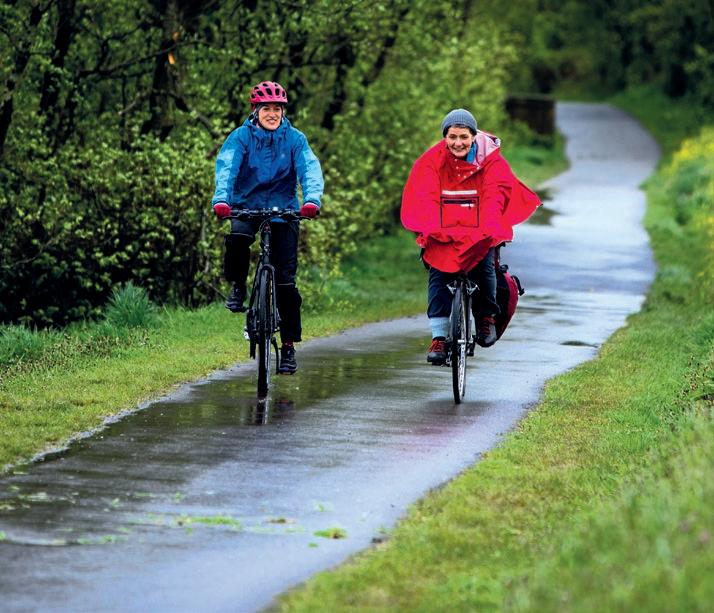
A proper cycle track in Clydach Vale in Wales. More are needed
Are there unique challenges in Wales?
We’ve some sparse populations, but with rurality e-bikes become even more important. Population tends to congregate around villages or towns, so while we might not develop active travel for everyone, we can do far more.
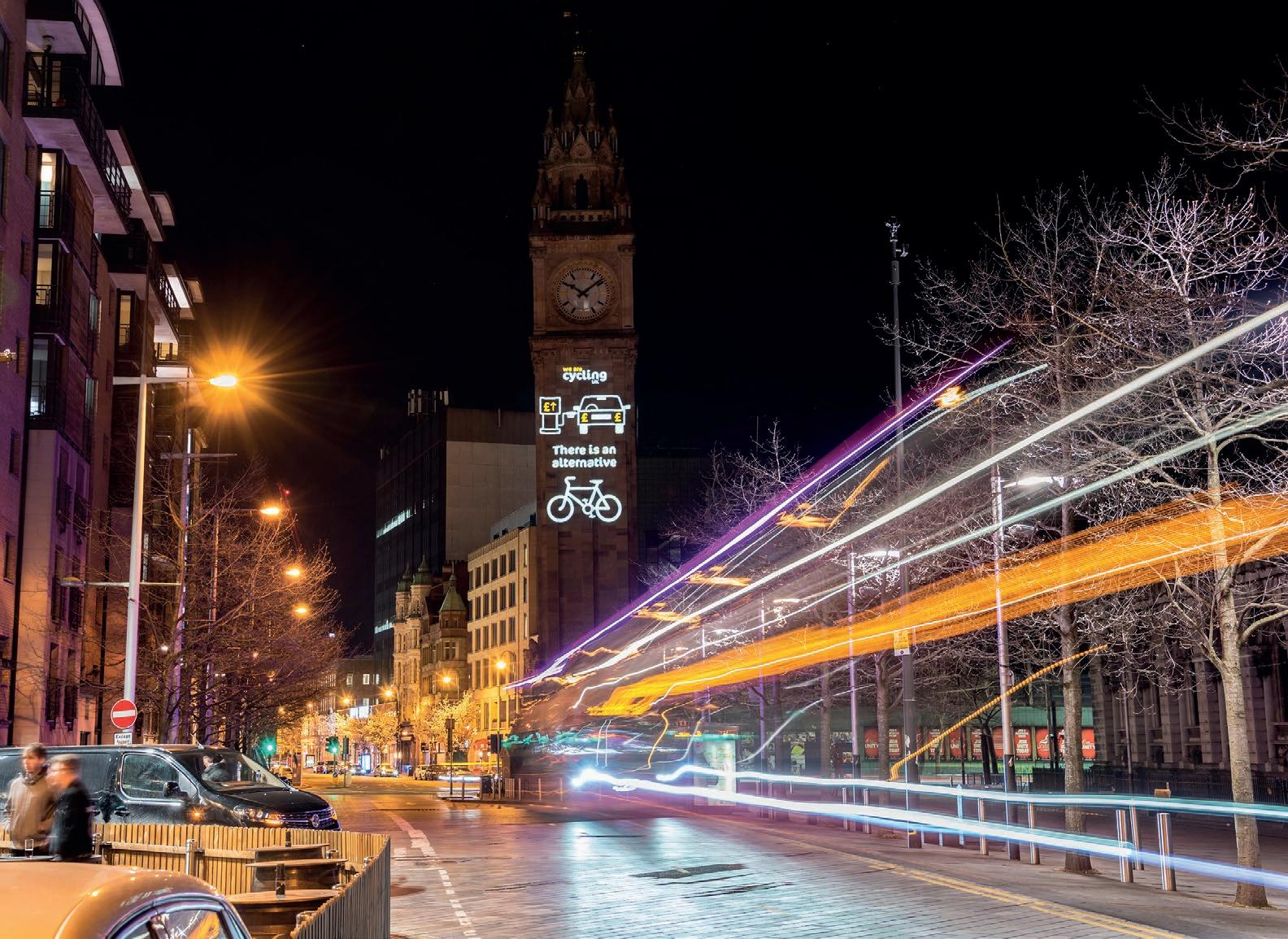
Have you been able to do much in your 18 months in post?
The active travel board I chair is working but the pace of change remains slow. Resources were properly diverted to the pandemic. I haven’t yet visited a local authority, which I’m planning to do this summer. Until you’re on the ground you don’t get a proper feel for what’s going on.
CAROLINE BLOOMFIELD
Director, Sustrans Northern Ireland
How did things like the pandemic cycling boom impact walking and cycling?
I think the pandemic sent a message to decision makers: people want to walk and cycle. COP26 was probably a catalyst. Transport is the biggest greenhouse gas emitter in Northern Ireland after farming.
Is a golden age of cycling starting to feel more than warm words?
A Climate Bill amendment means 10% of the transport budget for walking and cycling, and there’s a new hierarchy of road users with pedestrians at the top, then cyclists, and private vehicles at the
50% OF CHILDREN IN NORTHERN IRELAND LIVE UNDER A MILE FROM PRIMARY SCHOOL – 67% ARE DRIVEN
How could we get to the point where transport cycling isn’t just for bold, confident, often male cyclists, but for everyone?
This is a real passion of mine. Our latest Cycling Index survey shows 19% of men in Belfast cycle once a week or more but only 5% of women do. We make it easy and safe to drive but not to cycle. If the infrastructure is there, it will be used. We’ve worked with people with brain injuries to show cycling could and should be for everybody. Maybe we need more female designers; the number of times I talk to engineers who say “Oh, I’m happy with that and I’m a cyclist.” My thoughts are: “You’re happy cycling down a 60mph dual carriageway. Not everybody else is!”
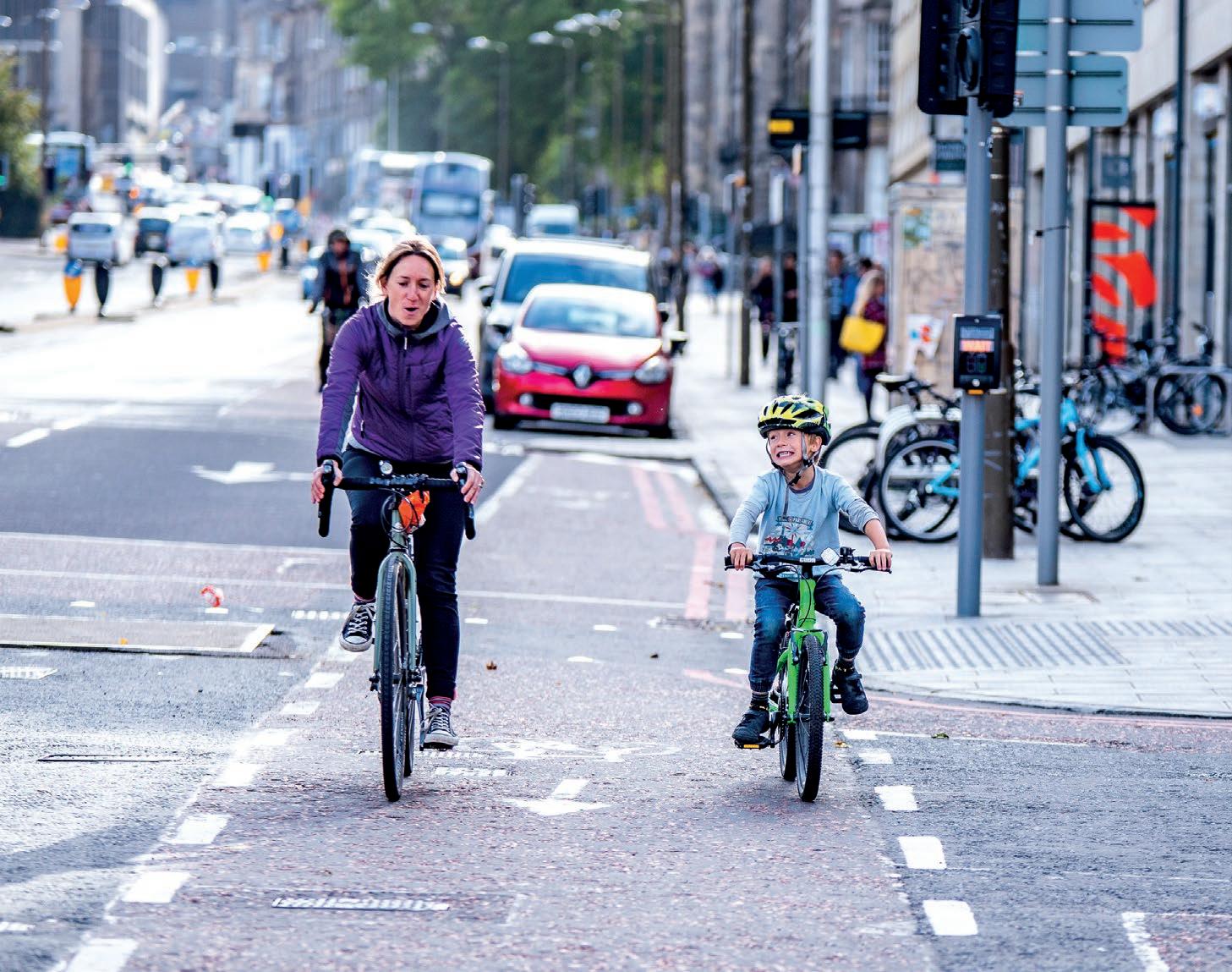
What’s being done to boost cycling in Northern Ireland, and what more needs to be done; any unique challenges?
The Department for Infrastructure (DfI) created a blue-green infrastructure fund for councils with some success; we need sustained long-term investment to start planning properly. Northern Ireland has about 142 miles of Greenway. The DfI, who manage everything on-road, launched a 10-year Belfast Cycling Network plan but we’ve a long way to go. We’re very good at putting tarmac down, not at putting cycling lanes in. I think all parties are more in tune with climate and active travel. When push comes to shove and when difficult decisions have to be made, that’s where it’s challenging.
Left: Belfast gets the message – hopefully Above: Edinburgh Andy Catlin. Far left: Double Take Projections Left:
KEITH IRVING
Chief Executive, Cycling Scotland
How much are things like funding, decarbonisation plans and the pandemic bike boom transforming cycling and walking’s prospects?
During the worst of the pandemic, cycling became an obvious choice for many, including people who hadn’t cycled since they were kids. Spaces for People projects, delivered by Sustrans Scotland and local authorities since the pandemic, increased dedicated space for cycling in many locations. Our own cycling friendly projects and innovative projects from many partners are also getting bikes to more people. Our 2021 Attitudes and Behaviours Survey indicated more than a third of people (35%) now cycle for transport or leisure, regularly or occasionally, a 30% increase since 2017. Those citing the environment as a reason for cycling more than doubled since 2017, to 28%. While the health and environmental benefits of cycling remain key drivers of change, money saved will undoubtedly also encourage more people to cycle.
Is a golden age of cycling, or a shift towards active travel, starting to feel like more than just warm words in politics, and if so, how?
Scotland is in the early stages of a cycling revolution with a commitment to spending at least £320 million or 10% of the transport budget on active travel by 2024/25. Long term financial investment, especially in infrastructure, is essential.
How can we transform cycling’s fortunes in the UK?
Firstly, implement existing Scottish and local government policy commitments and ambitions on cycling. Secondly, keep the successful campaigns going. Thirdly, keep reaching more people. Two-thirds of the population never cycle, but almost everyone can enjoy cycling.
How do we get to the point where transport cycling isn’t just for bold,
WHAT YOU CAN DO
Transport cycling improvements aren’t solely the preserve of nation-scale departments. You can help bring about changes where you live by becoming part of the Cycle Advocacy Network (CAN). “The Cycle Advocacy Network is here to support you to speak up for cycling,” explains Duncan Dollimore, Cycling UK’s head of campaigns and advocacy. “If you’ve ever tried to influence your local council, cycled your child to school, or spoken up for cycling in any way, you’re already a cycling champion, but with support from CAN you could become a local representative for Cycling UK and join our forum for local campaigners. “We’ve got loads of easyto-read resources, guides, and a network of people to link up with and receive support from. So, if you want to help get more people cycling where you live, CAN will bring you together with people with a shared interest in creating the conditions that enable more people to cycle, including better infrastructure for cycling and safer roads.
“Come and join us on the journey to get more people cycling.” Find out more about the Cycle Advocacy Network on our website: cyclinguk. org/cycle-campaigning/ cycle-advocacy-network. Or get in touch with us online if you have questions to ask: cyclinguk.org/webform/ join-cycle-advocacynetwork
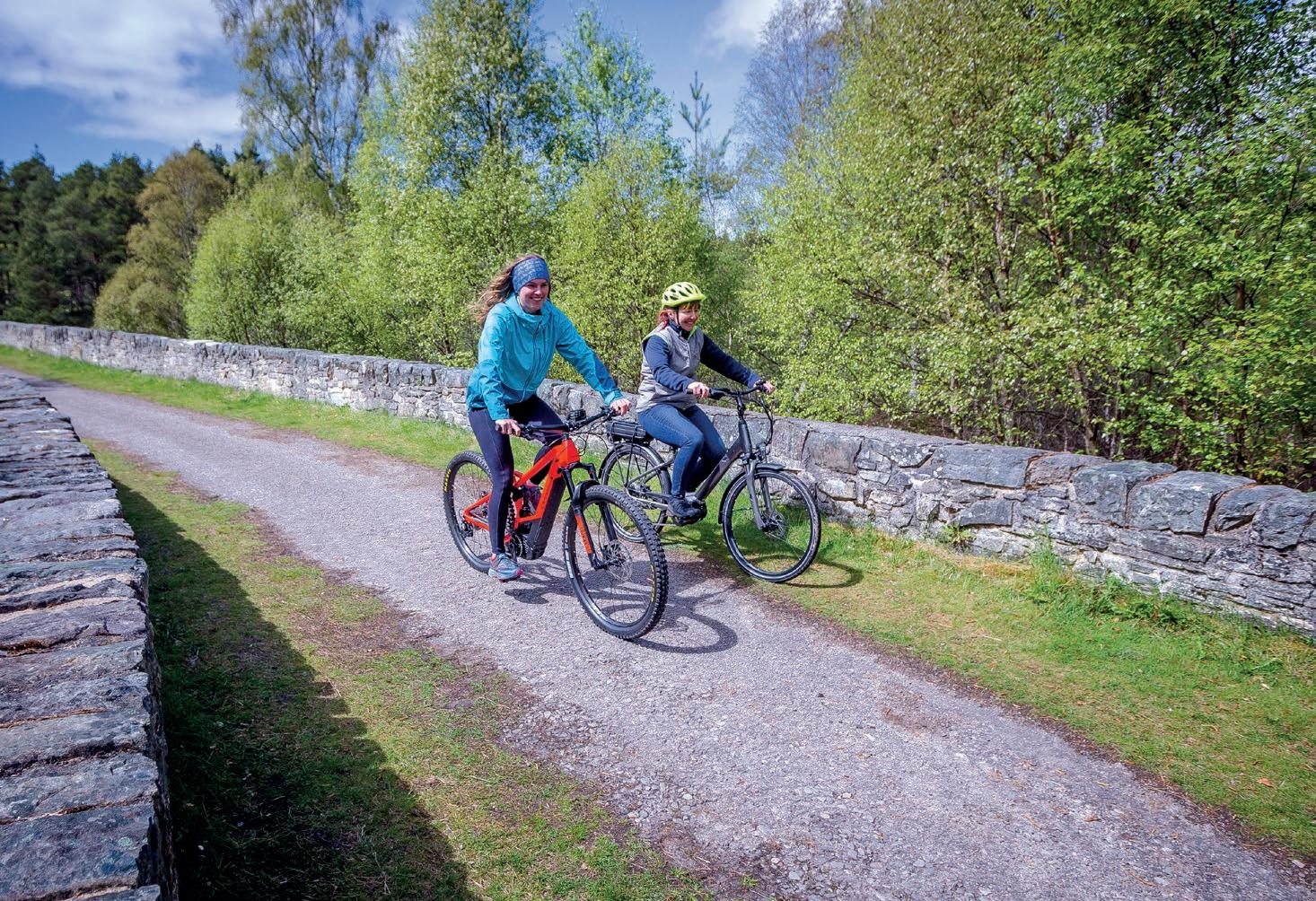
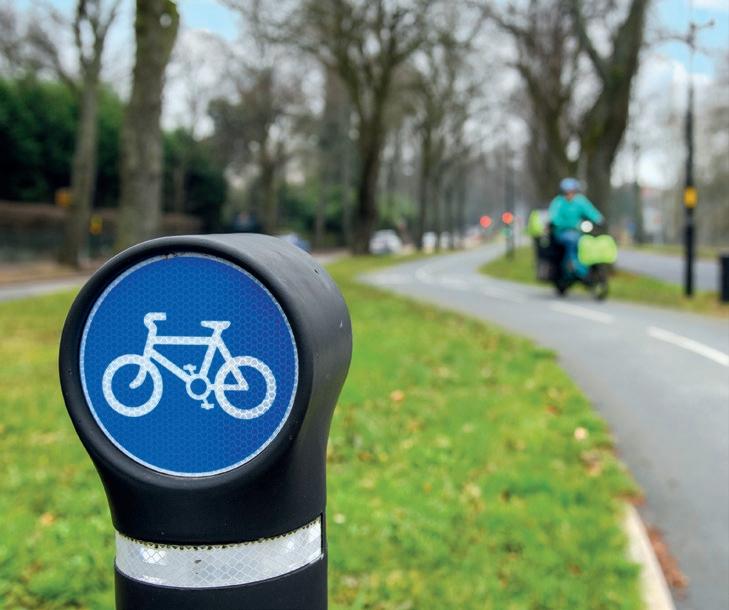
confident (often male) cyclists, but accessible for everyone?
Serious cycling casualties have increased over the last 15 years, and while the chance of being seriously injured or killed cycling on Scottish roads is low, one serious injury or death is one too many, and fear of traffic stops more people cycling. A network of dedicated separate cycling lanes is the biggest priority. Access to bikes, storage and training is also essential. Cycling Scotland is co-ordinating delivery of Bikeability Scotland cycle training for every child to gain the skills and confidence to cycle on road at any life stage.
What has been done to boost cycling, and what more needs to be done, in Scotland? Any unique challenges?
Scottish Government investment in active travel is increasing to £150million in 2022/23, including increasing the Cycling Walking and Safer Routes budget for local authorities to £35million. It also includes doubled funding for the National Cycle Network to over £10m. A new Cycling Framework and Delivery Plan should lay out the priorities for action by national and local government to 2030. We need to reduce vehicle traffic in
SCOTLAND COMMITS TO SPEND 10% OF THE TRANSPORT BUDGET ON ACTIVE TRAVEL
shopping and residential streets, in line with the Scottish Government commitment to reduce vehicle kilometres by 20% by 2030. We have a clear and urgent mission: we know every journey cycled will make a difference in cutting emissions in a just transition to Net Zero.
CHRIS BOARDMAN
Head of Active Travel England
What will Active Travel England do to transform walking and cycling?
We have an arm’s length body of the Department for Transport, that we are in the throes of forming. We’ve never been in a position of having billions of pounds and a pipeline of funding to deliver real change in how we move. We have pretty much five functions: to assess and advise; to make sure standards are met, and help local authorities do that. It’s internal communication, and also external with the public, to show people, for the first time, we’ve got something that makes nicer places to live, that this is people like them doing normal things, just less of it with cars. We’re going to be a repository for knowledge and give those with ambition the tools to get the job done. Monitoring and evaluation is a big part of this: we have to demonstrate it works, and we all have every confidence that it will. We know it pays back in a ratio of 6:1 so from the £2bn mentioned in Gear Change, we can get £12bn value for the country.
Left: Active travel in rural areas can be boosted with e-bikes Above: Birmingham
It’s about new ideas and one of the cunningly simple things we researched in Greater Manchester is a simple side road crossing, joining people’s homes with shops and schools. I think it was nine out of ten primary school aged kids are within a 15-minute walk from school. Imagine if we put a little crossing and made that really easy for them to do. Once you’ve done all this stuff, you’ve got to enable people to use it, give them the tools to use it with hire bikes, with activities that wrap around the safe space that we’re going to be creating in the next few years. By 2030 we need 50% of journeys to be made actively. That’s quite an ambitious target but it is achievable. Active Travel England can publish a league table celebrating authorities with the courage to change the status quo. Nobody will be forced to do anything; they just can’t do it badly anymore.
How much is behaviour change, things like cycle training part of the picture?
I think cycle training should be part of the curriculum. Adult training actually sees a big uptake, perhaps because adults have made a conscious decision that “this is something I want to be able to do”.
How can you ensure more recruits into the industry are representative of different backgrounds?
Women are [only] around 20% of the transport industry, and it’s massively underrepresented in terms of ethnicity. We are about to create an organisation where there are not enough people and we will have to train our own. We can choose who we take on, where we advertise, and it is my intention to proactively have an apprenticeship scheme, preferably within a year, to start training the people we need and make sure they represent the places and the communities we’re serving. I’m very keen to see a lot more people who don’t look like me in this industry. Chris was speaking to the All-Party Parliamentary Walking & Cycling Group.
